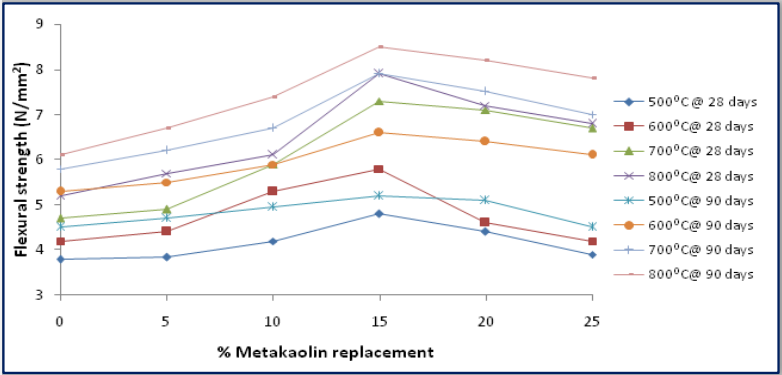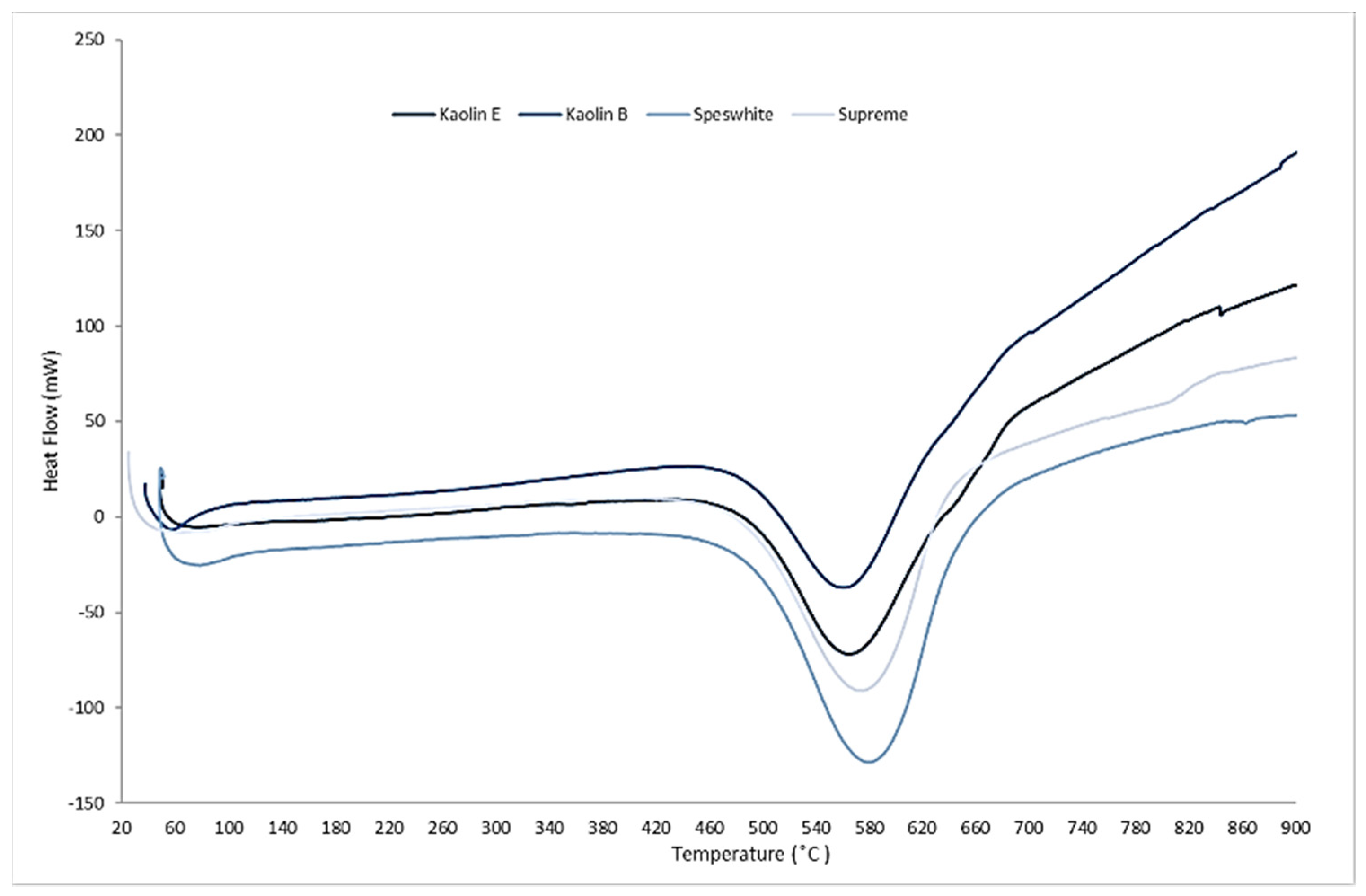Metacaulim
- O termo caulim ou “china clay” deriva da palavra chinesa Kauling (colina alta) e se refere a uma colina de Jauchau Fu, ao norte da China, onde o material é obtido, há muito tempo. É formado essencialmente pela caulinita, apresentando em geral cor branca ou quase branca, devida ao baixo teor de ferro.
- Metakaolin is an amorphous aluminosilicate that is a highly reactive natural pozzolan produced by the calcination and dehydroxilation of kaolinitic clay at temperatures between 500°C and 900°C.
- Another study used the measured heat evolved during the polycondensation process to measure the optimum firing conditions. Cioffi et al., 2003 found that the heat evolved is low in the case of kaolin fired at 550 °C for 2 hrs, while it was very high in the case of firing at 650 °C for the same period. From these results, they predicted that firing kaolin at 650 °C for 2 hrs is the optimum condition among firing at 500, 550, 650 and 700 °C for 2, 4 and 6 hrs [44].
- Also, the dihydroxylation of kaolinite at optimum firing conditions (600 °C for 60 min)
- 1. For the investigated kaolin types, the optimal temperature for thermal activation of kaolin between 750–850 °C for 1 h is sufficient to obtain the desired product. However, increasing the heating duration from 1 h to 2 h increases the reactivity of kaolins at temperatures lower than 750 °C.
- 2. Within the optimal activation temperatures (from 750 to 850 °C), by increasing the heating duration from 1 to 2 h, no significant improvement was observed in the compressive strength and dehydroxilation of kaolins. In addition, reactivity decreased with an increase in the heating duration at these temperatures.
- 3. Based on the conducted investigation, it can be concluded that relative compressive strengths increase sharply at ages between 3–7 days after which compressive strength increases slowly up to 28 days. It is demonstrated that metakaolins activated at higher temperature have more reactivity at early ages and in contrast at lower temperature show more reactivity at later ages.
- 4. Reactivity and dehydroxilation of kaolinite increases with an increase in temperature, and kaolins activated at temperatures greater than 650 °C cause an improvement in the 28-day-compressive strength of mortar samples, compared to the OPC control sample. However, as the treatment temperature approaches 900 °C, reactivity and consequently compressive strength, decrease.

The metakaolin was produced by thermal treatment (calcination) of the starting high-quality kaolin clay from Serbia. The optimal calcination parameters, for which nearly complete dehydroxylation of the material was achieved, are: temperature 650 °C and heating time of 90 min.
High-reactivity metakaolin (HRM) is a highly processed reactive aluminosilicate pozzolan, a finely-divided material that reacts with slaked lime at ordinary temperature and in the presence of moisture to form a strong slow-hardening cement. It is formed by calcining purified kaolinite, generally between 650 and 700 °C in an externally fired rotary kiln. https://en.wikipedia.org/wiki/Metakaolin
Figure 9 presents the DTA curves of the raw materials. First of all, the release of the absorbed water occurred for temperatures below 100 °C. Within the temperature range of 450–700 °C, for all the kaolin qualities, there was a characteristic endothermic peak (560–580 °C) which revealed that the dihydroxylation of kaolinite was achieved. All the received DTA curves did not seem to have huge differences between them. The slope of the DTA curve corresponded to the dehydroxylation process. These curves were generally sharper (greater absolute value of slope) for the well-crystallized materials [6]. Finally, the kaolinite transformation of the Supreme and Speswhite kaolin seemed to be completed at lower temperatures (~640 °C) than the other two qualities (~700 °C).
